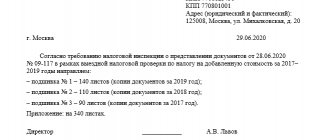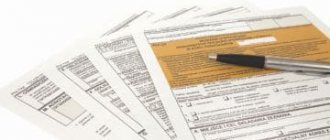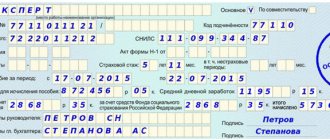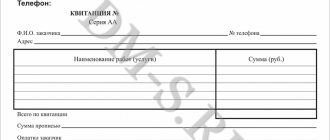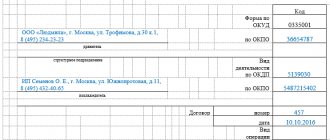Transportation of cargo by any vehicle by default involves the transfer of certain documents along with the goods being transported. When, in addition to the sender and recipient, third parties are involved in the transfer of property, the relationship between the parties must be legitimized through an agreement that will officially indicate the fact of the transaction between them, while the package of documentation accompanying the cargo must also contain other information. Some papers characterize the object of transportation, others - the process of movement itself and can be drawn up before shipment or during the journey, depending on their purpose.
Rules for issuing a waybill.
The list of documents that can be used for transporting goods by road includes a bill of lading. It is filled in according to the form by the shipper (unless otherwise specified in the contract) and handed over to the carrier, who can check the information contained for compliance with reality, after which the paper accompanies the object of movement throughout the entire route and is handed over to the recipient at the destination along with the goods. The waybill confirms the legality of transportation and certifies the existence of an agreement with the freight transportation service provider, reflects the data contained in it regarding the cargo, the obligations of the parties, the nuances of transportation, expenses, etc.
This document will also be required as reporting during a tax audit, so you should be careful about filling it out correctly so that service representatives do not have any doubts about the out-of-date provision of information on cash flows. Any discrepancies between the information in the transport invoices and reality may attract unnecessary attention from tax authorities and lead to unpleasant consequences in the form of additional charges.
For rail transportation, a railway consignment note in the form GU-29-O is used, for air transportation - a cargo waybill, and for delivery by sea, the legality of the movement of cargo is confirmed by a bill of lading.
When to draw up a TTN
Its registration occurs during the transportation of goods and materials from one owner to another. The delivery itself is carried out independently by the sending company or with the assistance of the carrier company (third party). The one who sends the cargo also issues a waybill (its original owner for the alienation of the right or one of the divisions of the owner company to another). When using commercial transportation services, a contract for them can be drawn up by the sender or the recipient. Then the document under discussion can be signed by one or the other party.
Who issues the TTN?
Delivery of goods from sellers to buyers is usually carried out by a third party - a motor carrier. This is the most common situation, there are 3 parties involved:
- supplier from whose warehouses goods are loaded
- a carrier whose function is to ensure delivery of goods
- recipient who accepts the transported goods
A reasonable question arises: which of these parties to the contract is filling out the TTN and at what stage. Resolution of the State Statistics Committee of the Russian Federation No. 78 (1997) stipulates that the consignor is responsible for issuing 1-T forms.
It fills in:
- Product section (important when accounting for inventory items). Counterparties are listed, the cargo being transported and the quantity are indicated. This information is considered the basis for the recording of material assets after receipt of the goods.
- Transport. Important when accounting for transport services. It includes what kind of transport is used, what organization is involved in the transportation, and what route it takes.
TTN or TORG – 12
The first allows you to move property from one point to another. This paper is used to write off the goods from the shipper's balance sheet to the account of the new owner. The key point is the presence of a vehicle in this scheme. This action may not take place in the form of a transaction between two parties, but as a transfer of goods and materials between branches of one organization.
TN (the second of those presented) is necessary specifically when making a sale and transferring ownership of property. It doesn’t matter whether transport is involved here or not.
Fine for lack of waybill and TTN
If the driver does not have a TN or waybill, then a fine can be issued according to the Code of Administrative Offenses of the Russian Federation, Article 12.3. Driving a vehicle by a driver who does not have the documents provided for by the Traffic Rules
2. Driving a vehicle by a driver who does not have documents for the right to drive it, an insurance policy of compulsory insurance of civil liability of vehicle owners, with the exception of the case provided for in Part 2 of Article 12.37 of this Code, and in cases provided for by law, a waybill or goods receipt - transport documents - entails a warning or the imposition of an administrative fine in the amount of five hundred rubles.
So, it is clear that if there is no TN, TTN or track record, then they may well issue a minimal fine. Although you can get off with a warning. I wonder if anyone had warnings rather than fines, and how often do they give the driver a warning rather than issue a fine?
Procedure, rules for filling out the TTN and sample
For experienced specialists, its preparation is not difficult, since the form with the values is ready for registration. You just need to know what to enter and where.
Step-by-step instructions:
- First, we assign a number to the document and indicate it (using the internal numbering accepted at the enterprise), and enter the date.
- In the “shipper” line we write information about the company sending the goods and materials (with full name, geolocation and working phone number).
- By analogy, we write down information about the addressee in the “consignee” section.
- Where the word “payer” appears, you must enter the company paying for transportation services.
- The correct OKPO codes must be written next to all parties to the transaction.
Removal is organized by the customer
Sometimes the customer organizes transportation using his own transport, that is, pick-up (free warehouse). In this situation, an invoice is not generated. There is no need for this, the cargo is immediately handed over to the recipient and only he is responsible for its safety. This is regulated by Art. 459 of the Civil Code of the Russian Federation.
The invoice serves as confirmation that the transportation contract has been signed. In this situation, there is no agreement, which means that a TTN will not be needed (Article 785 of the Civil Code of the Russian Federation).
The customer can hire a car to move the cargo. A specification form is not drawn up; here the customer acts simultaneously as a supplier and a recipient, and he himself ships the goods from the warehouse.
Bill of lading form
It can be unified, that is, uniform for use. You can use a format that is standard for everyone in order to certainly avoid claims from the tax authorities for arbitrariness in maintaining documentation. All information fits on one A4 sheet with compact placement of information and horizontal arrangement. The codes used here can be viewed in the all-Russian classifier.
When using a specialized program, the document is generated automatically if all the data is entered correctly. But today it is allowed to develop a convenient form yourself, shortening it, which greatly facilitates the work.
How often can they be fined for the absence of a technical document or waybill?
In principle, the lack of permits is a violation that cannot be eliminated on the spot, that is, it is of a continuing nature. For ongoing violations on vehicles, the deadline for their elimination is within 24 hours. That is, if, say, a driver drives without documents from point “A” to point “B,” then a fine for lack of necessary documents can be charged every day. Although I will say right away that although the practice of 1 day does exist for violations related to traffic rules, say, the elimination of violations under Article 12.5 related to the “List of conditions and malfunctions under which the operation of a vehicle is prohibited,” but exact and explicit deadlines are not prescribed anywhere.
How to fill out a waybill (Bill of Lading) - rules, sample
Since this is an accounting document, the rules for its execution should be followed. It will necessarily be involved in accounting if it certifies the real fact of the economic life of the enterprise. You cannot underwrite information in the required cells, make simple blots on top of the finished version, present information here inaccurately, etc. Corrections must be certified with the date they were made. Responsible persons sign and leave their full names here. Primary documentation is allowed to be compiled on paper or stored in the form of an electronic copy. But since we are talking about an accompanying document here, it is done exclusively in paper version. It will have to be delivered to the agreed addresses and signatures collected.
Despite the permission not to use a unified format, there is definitely structure in the TT consignment note. Everything needs to be presented clearly and informatively. When starting a business, you can take common examples from the public domain. But in the future it is recommended to debug the work and use standard forms. Specialized programs will help in compilation.
Do you want to implement “Store 15”? Get all the necessary information from a specialist.
Thank you!
Thank you, your application has been accepted.
How to correctly draw up a TTN according to the sample
If a standardized form is used, then its execution will not be difficult for experienced employees. However, the state at one time allowed not to use previously developed formats of primary documents. Enterprises as economic entities can develop them themselves. Transporting organizations and customers constantly deal with these invoices. This somewhat complicates the work process for subsequent participants.
The standard assumes the design of several sections. If the tax office finds fault with incorrectly completed documentation and issues a fine, its amount will vary depending on the category of the offense. In addition, the responsibility of the authorized person is assessed lower and in case of shortcomings, fines come to his name in a smaller amount than for the whole company. It is necessary to assign control functions to the chief accountant. And provide it with good software on your computer. The same goes for warehouse workers. Automation of work will simplify the process of its execution and minimize errors. Often problems arise precisely when filling out the 2nd transport section of the TTN.
If the TTN is without a stamp
If the absence of signatures makes any form of the TTN form invalid, then with a seal such a situation does not arise. According to clause 9 of the Rules established by the Government of the Russian Federation (Regulation No. 272 of April 15, 2011), affixing seals on 1-T forms is carried out at the request of the parties; the law does not oblige them to use seals or stamps. All parties to the agreement simply need to sign.
The consignment note is considered a significant primary accounting document for each party to the cargo transportation contract. It is important for solving many problems that arise during transportation and accounting of material resources from one party to the contract to another.
Top
Write your question in the form below
How is it different from TN?
The concept of TORG-12 was mentioned above. This is a form of T-waybill (namely “commodity bill”). It is standardized at the state level. There are also columns and rows with values that should be filled in. Private information about participants is provided and nationwide coding is used.
A TT invoice is issued if transport is used for delivery (with its full description), but with the above one you can do without it. The first one is allowed to be used when making sales and when simply moving cargo. And the second is required exclusively in the presence of commodity-money relations. It is more extensive and includes a lot of information (including terms of the transaction, quantity of goods and materials, cost, VAT).
In addition, there is another concept of TN (“transport”). Designed for road freight transportation.
Who should issue a TT invoice?
Depending on the situation and stage, this is done by the recipient or the sender (and all their employees and representatives). Usually it is the sender who applies it to loading and then everyone is engaged in entering their data. The driver reports the route, and the recipient describes the acceptance procedure. A third party may be involved in the delivery (on contractual terms of cooperation). Then a transport company specializing in transportation is also related to TTN. Both parties have the right to enter into an agreement with it.
Services of a transport company are involved
When engaging specialized transportation companies, the rules for filling out the TTN are similar to the conditions for registration upon delivery by the buyer.
But you will need to issue 4 copies:
The first is for the shipper (to prove the fact of shipment of the goods).- The second is intended for the recipient to accept the goods for accounting.
- The carrier gives the third copy to the party paying for the transportation (the fact of transportation is confirmed).
- The fourth must be attached to the waybill and used to calculate the driver’s salary.
Document structure
In addition to the unified form, where the structure is clearly visible, there are special instructions on the procedure for payment for transportation from 1983 onwards. The last revision was in 1997. It accurately describes the filling instructions in a step-by-step manner. In total, there are 16 rule blocks with their own number of columns and paragraphs on the topic of correct documentation.
Since the beginning of 2011 (Federal Law 402), the format of such an accounting “primary” has been approved by the economic entity. However, it must contain all the necessary details (as specified in the same Federal Law). Therefore, now unified all-Russian forms do not need to be used, but rather develop your own with the required points. But to avoid mistakes, a ready-made basis for filling is also good. The main thing is that a single rule applies to all situations: an invoice must be drawn up when a fact of economic life is completed, and if this is not possible, immediately after its completion. In general, all participants need to understand the structural arrangement of blocks. It is also necessary to take into account how to correctly fill out and sign the TTN for the driver.
Filling algorithm
The document must indicate the carrier, the consignee, the name of the procedure (for example, shipment of a specific product or, conversely, loading) with the date, as well as the type of product being shipped/loaded.
Filling out the 1st section in 1-T
Almost all of it will be filled out by the shipper. To begin with, detailed information about the property being moved, food products, etc. is entered into the table.
The first column contains the item number of the goods and materials. In the second and third - the price list number with the article (if such types of accounting are fundamentally maintained in this organization). In the fourth, with the value “Quantity”, the number of transported items, products, etc. is entered. Next comes information about the piece price, exact names, measuring units, type of packaging (cardboard, cellophane materials, etc.)
Further, in the order of registration and filling out the consignment note (Bill of Lading), different digital values are written about places, tonnage and cost. If you overpay for something (excess weight, transportation costs), this is also indicated.
The next step is to enter the generalized amount for all categories and product numbers according to the warehouse system. Then the weight of the cargo is written in words and in digital terms, the appendices (with the number of sheets) are indicated and below in words the full and final price of the released warehouse property.
Below on the left side you need to sign the responsible persons with transcripts: the shipper, the authorized person for release with shipment, as well as the chief accountant. To the right, enter the driver’s data (about his identity, existing power of attorney). A little later, the person representing the consignee will sign here to confirm that the “parcel” has been received.
Completing section 2
Here we insert transportation information.
Namely:
- when will the cargo be delivered?
- describe the carrier company;
- enter information about the car (make and state number);
- in the far right column - the numbering of the invoice and waybill.
In the “Payer” section we include information about the delivery customer and the driver. Next, you need to make it clear that this is a license card, a registration number in the TTN and what to write about the series in the transport section. You only have this information when you undergo licensing a little earlier. It is not currently being carried out, so this information may seem unclear to you. It is simply missing and missed. As for the type of transportation, it is necessary to clarify - “commercial”. As for waypoints, they can be adjusted in the future.
Below is a sign. In the column “Method of determining mass” the measurement method is indicated (what weighing devices were used: manual, automatic and other formats). To the right under the table are other accompanying documents: confirming quality, passports, acts, etc., and to the left are signatures. Next comes the table image again. Here we write information about loading/unloading.
If several sheets are expected, then additional ones must be mentioned. Moreover, on subsequent pages the number of inventory items and locations involved is duplicated. The driver also enters information: mileage, travel costs, penalties for incorrectly executed documents, downtime, etc. At the end, the carrier’s accountant writes out the calculation.
What should I write about the method of determining the weight in the TTN according to the rules for issuing a consignment note if this weighing did not take place? If there is none, we indicate “normative” or “according to the labeling”.
Who signs the document?
All actors involved in issuing from the warehouse, loading, unloading, delivery and acceptance of goods and materials. They are financially responsible to their management or customer. And they have documented authority to sign the accounting documentation. In the absence of these, the paper may be invalidated. But this will happen during trials. Otherwise, the error will go unnoticed.
Where is the stamp placed?
On all documents it is affixed in the part where there is an indication of positions. The people occupying them must sign. As for non-standard forms, the location of the desired location may move. In any case, it is located after all the information about the participants and the goods being moved. By signing, persons certify dispatch, transportation and acceptance. The location in the unified version is in the middle part of the sheet. To be sure, it’s better to see how to make and issue a consignment note according to the sample.
Applications
Additional documents can be attached to Form 1-T if they are required in a particular situation. These are passports, certificates, various certificates and contracts. Their list should be indicated in the line provided. Or they will not be taken into account. Failure to comply with formalities causes additional difficulties. You will have to deliver the papers or send them by mail. All papers are also required to be stamped and signed. The information contained in them should not contradict each other.
Can an error in the TTN lead to a refusal to deduct VAT?
Question. The TTN mistakenly indicated the wrong number and make of the car that transported the goods. Could such an error cause the buyer to be denied a VAT deduction?
Answer. To apply tax deductions for VAT in accordance with Article 171 of the Tax Code of the Russian Federation and Art. 172 of the Tax Code of the Russian Federation, it is sufficient to fulfill three conditions:
- registration of goods;
- use of purchased goods in activities subject to VAT;
- availability of an invoice issued in accordance with the law.
The presence of a tax identification number is not a prerequisite for applying a VAT deduction; therefore, an error in the tax identification number cannot result in a refusal to deduct (letter of the Ministry of Finance of the Russian Federation dated October 30, 2012 No. 03-07-11/461).
Who issues 1-T when transporting by road?
The original designer may change. This is the sending, receiving party or a third party. The latter is possible by concluding an agreement with the transporter. But a more common situation is when the goods are processed by the direct sender. He is allowed to order transportation from a third party or use his own driver.
If delivery is carried out by the supplier
This means that he gets the role of a filler. It will eventually reach all recipients, for which several copies are made at once. These are transferred to the regular driver or an employee of the transport company. Using the instructions, the correct filling of the TTN is guaranteed.
If the customer organized the removal
According to the rules, the person ordering transportation is the shipper (Government Decree 272 of April 11). This means that the functionality passes into his hands. Although it is worth clarifying what “order transportation” means. After all, it can be ordered by one or another subject of the transaction. By agreement, one or the other person also has the right to pay. Everything is negotiable.
If transporter services are ordered
He can be hired by any of the indicated persons and make payments to him in a jointly agreed upon way. That is, delivery can be made at the recipient’s expense (if agreed) or at the sender’s expense. The option of separating responsibilities is also acceptable. The amount is paid in installments from each payer or by one payer (with or without their subsequent offset). But the transporting organization most often does not issue the TTN itself. This is what the main participants do. However, redirection may occur along the route. Then the delivery person prescribes changes on the fly. The lines “Consignee” and “Unloading point” have been corrected. When an order is received by an intercity transport organization, the carrier can himself fill out form No. 2-tm in 5 copies and enter details in the header based on the application and waybill No. 4.
Delivery is carried out by the supplier
Quite often, transportation is carried out by the supplier himself. Then the registration of the TTN is carried out according to the following scheme:
- the supplier (aka sender) enters information into the TTN
- enters his own details and names of his transport in section 2
- he retains one invoice for the purpose of subsequent write-off of the goods
- 2 copies are sent to the recipient
Video about filling out the TTN:
One of the received invoices remains with the consignee to record the delivered goods, the second is transferred to the carrier company.
Number of copies
There are 4 of them in total. Signatures are placed on the consignment note for everyone. The compiler keeps one for himself. The rest are given to the driver for subsequent transfer. The 2nd is given to the consignee, and the 3rd and 4th are given to the head of the transporting company. The last two should already be signed by the sender and the recipient. The penultimate one, together with the invoice for payment for the transportation service, is transferred to the customer. And the final amount goes to the carrier in his accounting.
Do you want to implement Warehouse 15? Get all the necessary information from a specialist.
Thank you!
Thank you, your application has been accepted!
The transportation customer is neither the shipper nor the consignee
In this case, the conditions of transportation and the cost of services are agreed upon with the transportation customer, who is not the shipper or consignee. The shipper does not fill out subparagraphs 1-7 of the waybill. This is done by the customer of the transportation or the carrier.
For the same reason, in clause 16 of the TN, the signature and seal are affixed by the customer, and not the shipper. This means agreeing with the carrier on all the conditions for transporting the goods and confirming the reliability and correctness of the information entered in the waybill. In all other respects, registration occurs in the order described in the table.
Indication in clause 16 of the consignor's TN will not be a mistake. As an option, you can add a column to clause 16 and indicate along with the customer's shipper.
In such cases, we recommend that in the contract of carriage the carrier’s obligation to fill out the TN (including clauses 1-7) is indicated and the TN is drawn up in 4 copies.
Do I need to return the document?
This is the same paper as the transfer acceptance certificate. They must be kept by both parties to the transaction with the signatures of their representatives. They are signed and returned as they are required for reporting and accounting purposes. And also to certify the actions taken, which will help to defend your rights if necessary. From the above it is clear that the TT invoice is formed in a large number of different variations. It is needed to describe the shipment and the persons involved. In the end, everyone gets their own copy, on which the rest of the characters had previously signed. This primary documentation goes to the archive, and until that moment remains under control in the accounting department.
We looked at what sections it consists of and how the waybill is filled out.
If the company has developed its own form, then it may be necessary to explain all its subtleties to other participants. After all, many still use the previously adopted standardized document for convenience and reliability. Software from Cleverence will help simplify all routine procedures with documents. We offer solutions of various types: both individual offers that are personalized specifically for the type of business activity and all the features of the “internal kitchen” of a legal entity, and packaged solutions for any company. Number of impressions: 21558
